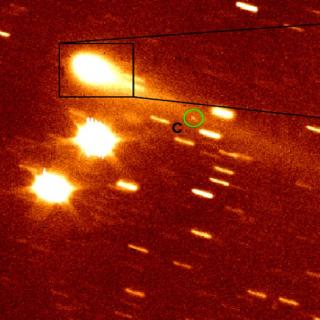Bibcode
Pinilla-Alonso, Noemí; Popescu, Marcel; Licandro, Javier; Fernández-Valenzuela, Estela; Grundy, Will M.; Duffard, Rene; Cabrera-Lavers, Antonio; Hidalgo Soto, Diego; Rizos, Juan Luis; Morate, David
Referencia bibliográfica
The Planetary Science Journal
Fecha de publicación:
12
2022
Número de citas
3
Número de citas referidas
3
Descripción
This work presents the analysis of seven mutual events of the Patroclus-Menoetius system (PMS) observed during the last season of mutual events, in 2017-2018. We compare the obtained light curves with those predicted using Grundy et al. and discuss the differences in the timing of the events and the drop of magnitude. Based on models of these observations, we present a collection of orbital parameters that provide the best fit for the observed events and compare the new solutions for the orbit of the system with solutions provided in the literature. Furthermore, we also discuss an interesting finding in the light curve of the only superior event in our collection. This light curve (the one with the best signal-to-noise ratio in our data set) shows the imprint of a possible crater in the south pole of Menoetius as deep as a fourth of its radius.
Proyectos relacionados

Pequeños Cuerpos del Sistema Solar
Este Proyecto estudia las propiedades físicas y composicionales de los llamados pequeños cuerpos del Sistema Solar, que incluyen asteroides, objetos helados y cometas. Entre los grupos de mayor interés destacan los objetos trans-neptunianos (TNOs), incluyendo los objetos más lejanos detectados hasta la fecha (Extreme-TNOs o ETNOs); los cometas, y
Julia de
León Cruz